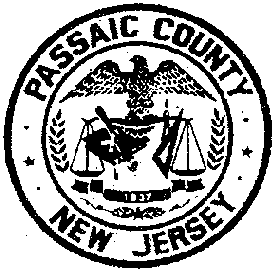"We've been ratcheting down to a lower level of housing production from decade to decade," said James W. Hughes, dean of the Edward J. Bloustein School of Planning and Public Policy at Rutgers University, noting that successful land preservation referendums have limited the number of new dwellings. "It's also partly because we're running out of affordable, developable land so that housing construction has become severely constricted."
Housing Increase Is Slow in N.J. ; State 'Running Out' Of 'Affordable' Land
Source: Record, The; Bergen County, N.J.
Publication date: August 22, 2006
New Jersey is adding new housing at a slow rate, especially in the northern part of the state.
The number of housing units in the state increased by just 4 percent from 2000 to 2005, according to Census Bureau data released Monday, ranking New Jersey 43rd in terms of percentage growth. Much of the growth was in Central and South Jersey.
Bergen County added 6,213 housing units over that span, for a growth rate of 1.8 percent, with the development concentrated in condos near the George Washington Bridge and in homes in northwestern towns like Oakland and Mahwah.
Passaic County added just 1,267 units, for a growth rate of 0.7 percent, the smallest in the state.
"We've been ratcheting down to a lower level of housing production from decade to decade," said James W. Hughes, dean of the Edward J. Bloustein School of Planning and Public Policy at Rutgers University, noting that successful land preservation referendums have limited the number of new dwellings. "It's also partly because we're running out of affordable, developable land so that housing construction has become severely constricted."
Hughes said New Jersey housing is so expensive that lulls in new dwellings here are rooted in the affordability of some neighboring states.
"I often joke that God gave us eastern Pennsylvania to provide New Jersey with affordable housing," Hughes said.
In Morris, some 7,949 housing units were added, a 4.6 percent increase. And Hudson logged 6,828 new units, or a 2.8 percent increase during the period, with much of the growth on the waterfront.
The units counted by the Census Bureau include detached houses, condominiums, rental units, mobile homes and trailers.
"There are all sorts of things influencing this, like buildable lots, land-use controls, immigration or migration," said Joseph J. Seneca, a Rutgers University professor and chairman of the state Council of Economic Advisors.
While Seneca cautioned that the numbers don't include a complete picture lacking, for example, a breakdown of how many single- family homes were converted for multifamily use he did say the data are somewhat telling.
"It is in line with what housing permit data over that time has been showing," Seneca said.
"On the demographic side, it's still a growing population even though we had some fall-off ... after 9/11."
Indeed, separate building permit data for North Jersey, which includes permits issued but not necessarily units constructed, showed that North Bergen logged the most activity during the period, with 1,189 issued.
Edgewater ranked second, with 1,007 permits granted.
Pequannock followed with 942, Palisades Park had 885 and Fort Lee 876.
Much of the residential development in New Jersey in recent years has been along the shore.
"Ocean County has long been the fastest growing county in New Jersey," Hughes said.
"Water is a highly desirable feature, and the homes that are away from the ocean still are more affordable than those in Bergen and Morris."
While Ocean County added more than 20,000 dwellings in the period, for a growth of 8.1 percent, tiny Gloucester County had the fastest rate of increase, adding 8,083 units for a rate of 8.5 percent. From 2004 to 2005, Cape May County had the fastest growth rate in the state, adding 1,949 dwellings, for an increase of 2 percent.
Nationwide, Flagler County, Fla., had the fastest growth over the year, increasing by 14.8 percent or more than 5,000 units.
Three other Florida counties made the top 10.
Among states, Nevada had the fastest growth rate from 2000 to 2005, roughly 23 percent.
Rhode Island increased at the slowest pace, 1.8 percent.
* *
E-mail: mcaleavy@northjersey.com
(c) 2006 Record, The; Bergen County, N.J.. Provided by ProQuest Information and Learning. All rights Reserved.
Send an e-mail message with a link to this article to anyone/everyone in your address book. Click on e-mail [envelope] icon, below |





0 Comments:
Post A Comment